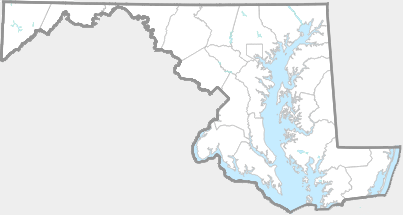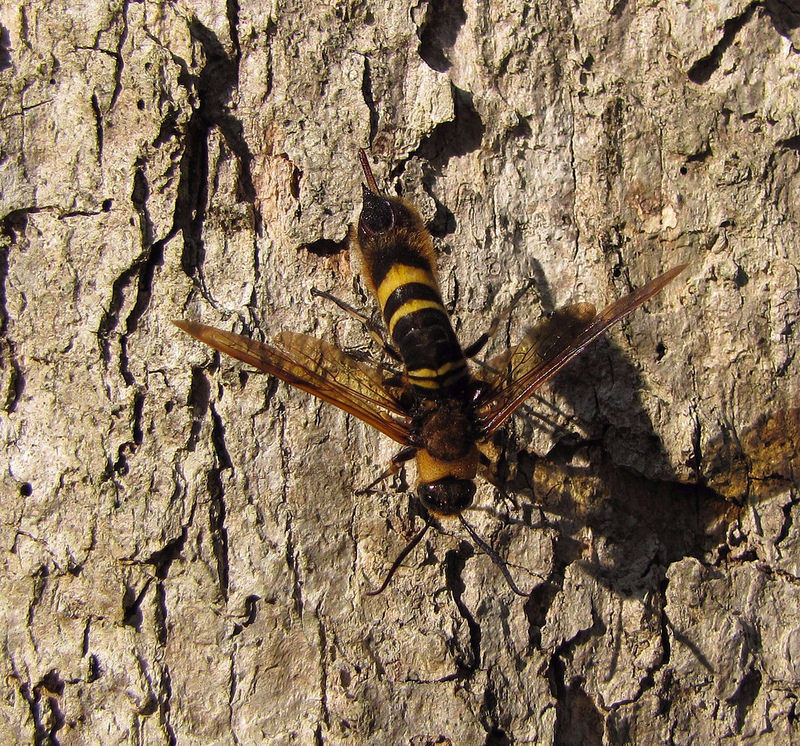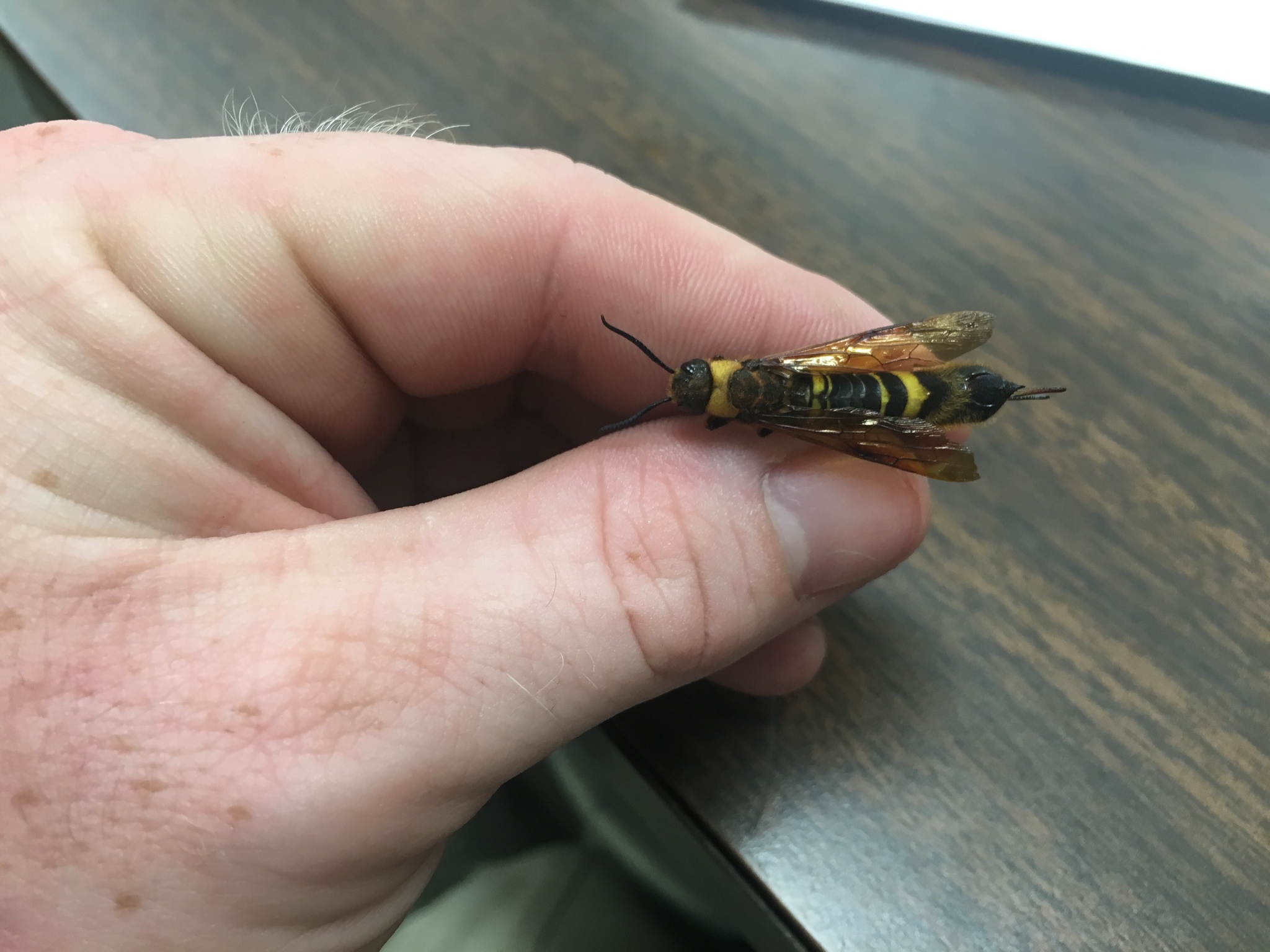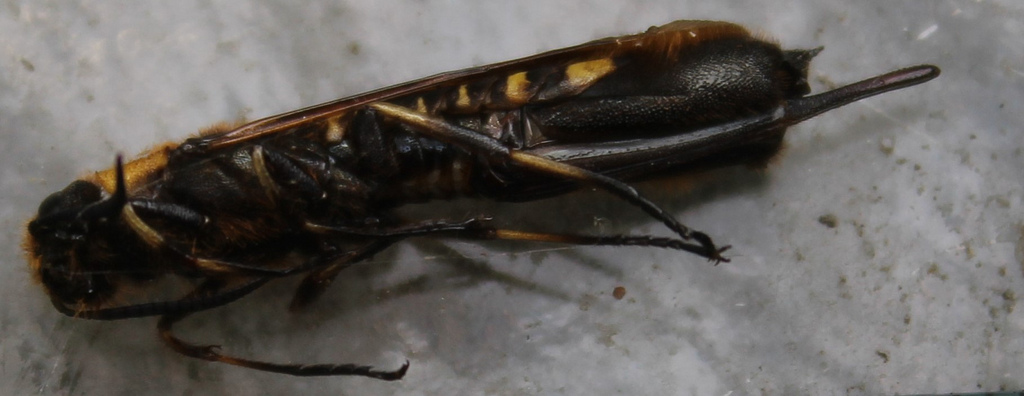








In the United States, Asian Horntails were first established in Florida and Georgia in the mid-1970s. Authorities believe that the species was introduced into the US as larva that was living in the wood of packing boxes that were being shipped from Asia. Asian Horntails have become well established in the southeast United States. Jared Satchell's Talbot County, Maryland record may be the farthest north record for Asian Horntail in the United States.
According to the paper, "Host-use Patterns of Eriotremex formosanus (Hymenoptera: Siricidae) in South Carolina, U.S.A." by Michael D. Ulyshen and James L. Hanula published by The American Entomological Society Entomological News, 121(1):97-101. 2010, "...the exotic Asian horntail, Eriotremex formosanus (Matsumura), first captured in Florida and Georgia in 1974, has been reported from numerous hardwood species as well, and is now well established in the southeastern United States (Smith, 1996; Schiff et al., 2006; Warriner, 2008). Unlike the European woodwasp, Sirex noctilio Fabricius, E. formosanus is not considered an economically important pest because it apparently only attacks dying or dead trees (Warriner, 2008). However, the species may someday emerge as a pest in North America or elsewhere, and its ecological impacts in North American forests remain unknown. Therefore, information on the biology and host-use patterns of E. formosanus is of interest."
Female horntails lay their eggs in trees, where the young develop. Most species of North American horntails use only conifers as host plants but the Asian Horntail prefers hardwoods. In the above article the authors found that the species seemed to prefer Water Oak and Sweetgum. Jared Satchell photographed two individuals on a dying White Oak. Our native Maryland horntail Pigeon Tremex (Tremex columba) also prefers hardwoods, so there is some worry that the Asian Horntail may out complete our native horntail species. We will have to wait and see what impact the Asian Horntail will have on our local ecosystems. Hopefully it will not wreak havoc like many other alien insects.
There are 7 records in the project database.
| GA | AL | WA | FR | CL | MO | HO | BA | BC | HA | CE | PG | AA | CV | CH | SM | KE | QA | CN | TA | DO | WI | SO | WO |






